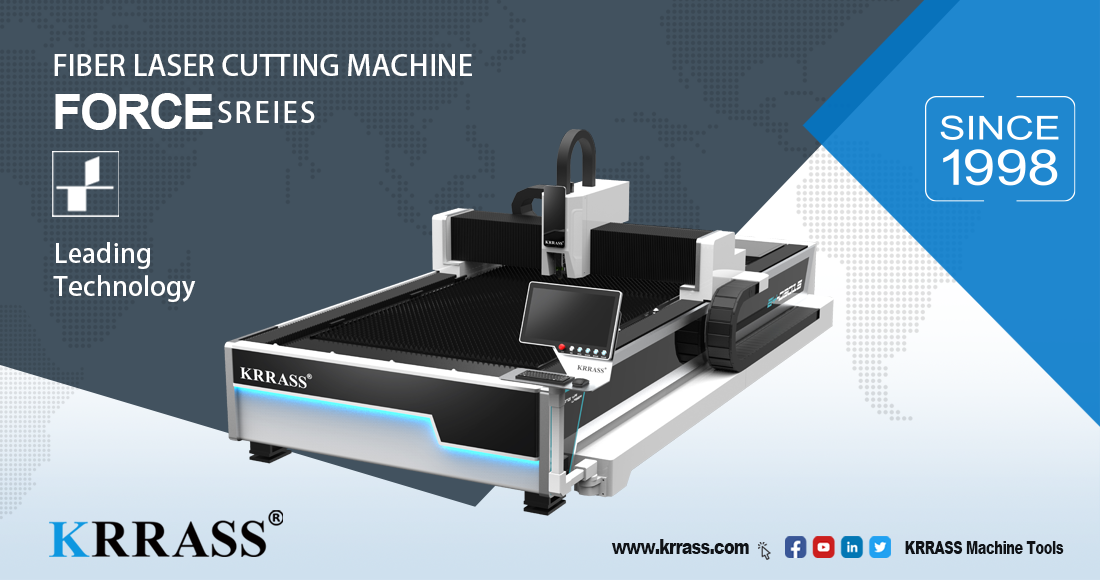Subtractive manufacturing techniques are typical operations for the fabrication of parts in industries. One primary example of such techniques is sheet metal laser cutting – an essential manufacturing procedure.
The process focuses the laser beam on the material surface to burn, vaporize or melt materials and finally produce desired outcomes. Since it is a precise and accurate process, it makes fabricating components with intricate details easier.
This article is a comprehensive guide with all the necessary information you may require on laser cutting before venturing into it for your next manufacturing gig.
What’s Sheet Metal Laser Cutting?
Sheet metal fabrication is one of the primary industrial manufacturing techniques. As such, sheet metal laser cutting appears to be one of the go-to procedures. Laser cutting fabrication uses a high-power beam of light (laser) to cut out flat and thin sheets of metals. The process is directed by optics and computer numerical control (CNC) technology, which accounts for the high precision of laser cut parts.
History of Sheet Metal Laser Cutting
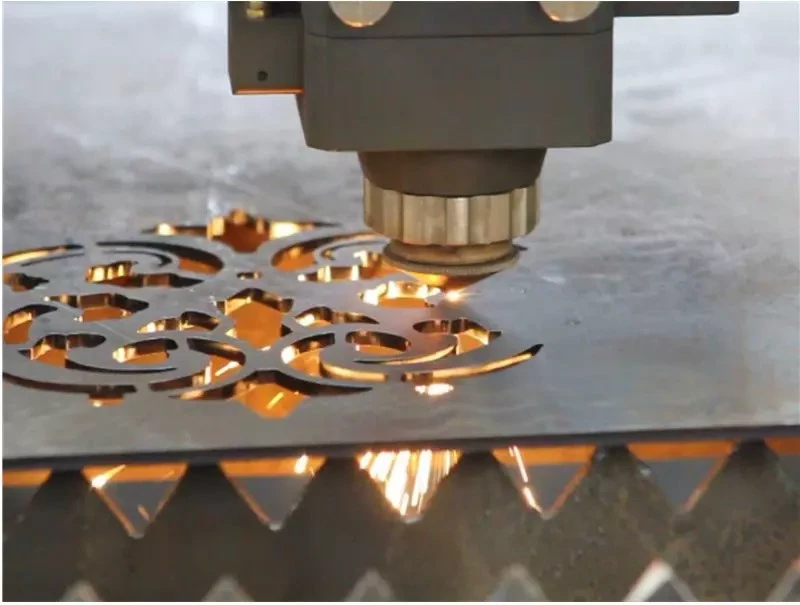
Laser cutting technology has been in existence for over 60 years, with its first attempt to cut metal sheets dating as far back as 1960.
By 1964, CO2 lasers were already in use for manufacturing intricate details such as welding clock springs. The automation and high precision features of laser cutting over other cutting processes made them widely accepted for delicate manufacturing and large volume production.
Fiber lasers were first produced in the 60s, but not until the late 80s before they hit the commercial market. The 1990s is regarded as the golden age of laser tech – as it gave way to many high-power lasers, like the solid-state lasers that vastly improved efficiency and productivity. By the early 2000s, laser cutting services were now a widely accepted manufacturing technique used by several industries, such as the automotive and aerospace industries.
Types of Lasers For Sheet Metal Cutting
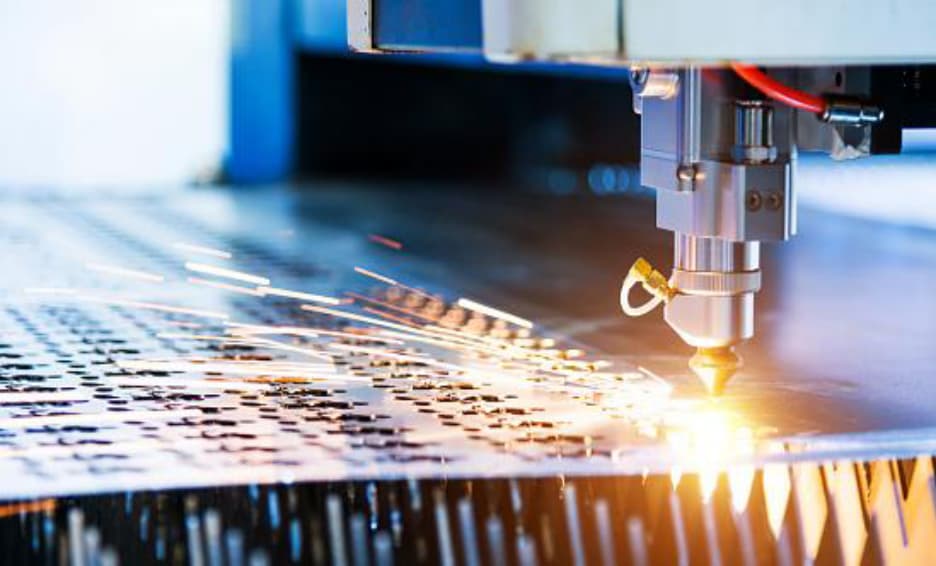
There are three different forms of lasers for cutting materials in industrial manufacturing. Each laser cutter has unique features that distinguish them from another. With that said, below is a comprehensive summary of the three types of laser cutters.
Fiber Lasers
Fiber laser cutting machines are some of the most potent precision cutting devices. They belong to the solid-state lasers using seed lasers to amplify the beam with special glass fibers. They are effective for cutting pieces of metals, alloys, and non-metals like glass, plastics, and even wood. Other than simple cutting operations, they are suitable for metal engraving and annealing.
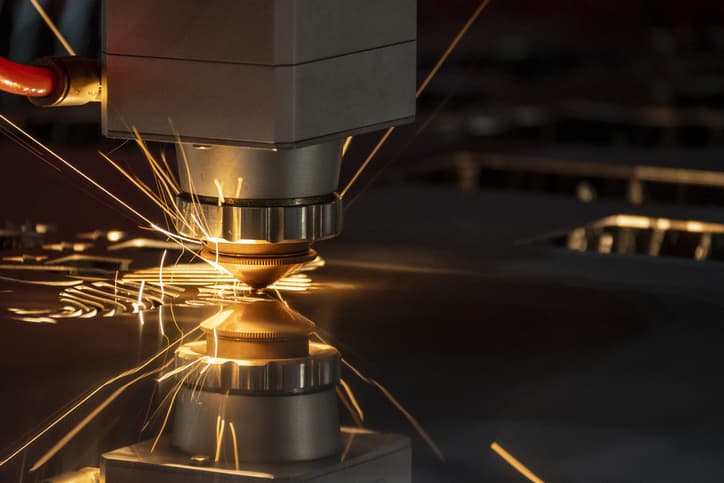
Fiber laser kerfs are more extensive than others; this may account for their high power. They possess a long service life of not less than 25,000 hours and thus require less maintenance. They produce some of the strongest and most stable beams. However, they are best suited for materials with less than 20 mm thickness.
CO2 Lasers
CO2 lasers produce the beam of light by running electricity through a tube filled with a mixture of gases. The gas mixture contains mainly carbon dioxide and inert gases – helium and nitrogen, the commonest forms for lasers.
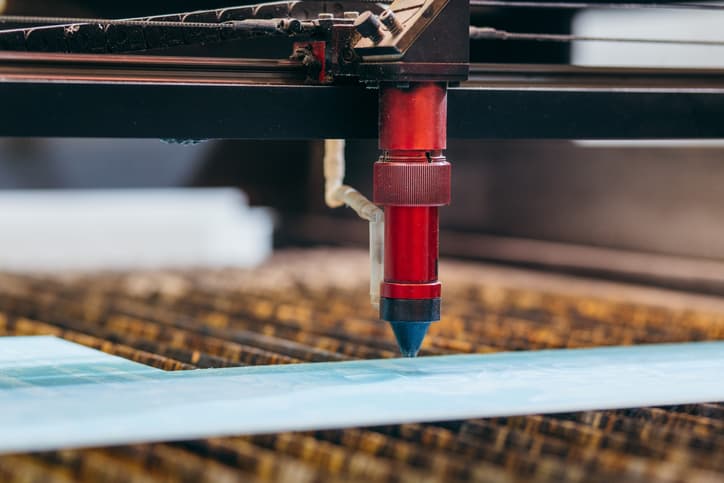
However, they are less potent compared to fiber lasers. CO2 laser machines can only cut non-metals like wood, acrylic, and plastics. In some cases, they may also function for sheet metal laser cutting, especially thin sheets of aluminum and some other non-ferrous metals.
[You May Want to Know The Fiber Laser vs CO2 Laser: Which is Right for You.]
Crystal Lasers
Crystal laser cutters exist in two forms: Nd:YAG (neodymium-doped yttrium aluminum garnet) and Me:YVO (neodymium-doped yttrium ortho-vanadate, YVO4) crystals. Both are incredibly high-power cutting devices. However, they are pretty expensive yet have about half the life expectancy of fiber lasers – 8,000 to 15,000 hours. They are suitable for cutting coated and uncoated metals, non-metals and plastics, and even ceramics under specific circumstances.
Three Sheet Metal Laser Cutting Processes
Laser cutting sheet metal is the thermal process that involves using a laser beam to cut out pieces off a metal sheet. Primarily, there are three methods of cutting sheet metal.
Laser Beam Fusion Cutting
Fusion cutting uses an inert cutting gas, often nitrogen or argon, to thrust out the molten material from the cutting torch. Since using the inert gas, it prevents oxidation at the cutting edge without reacting with the process. The process is suitable for flat and thin sheets and for cases where material must meet high visual requirements and fewer post-processing needs.
Laser Beam Flame Cutting
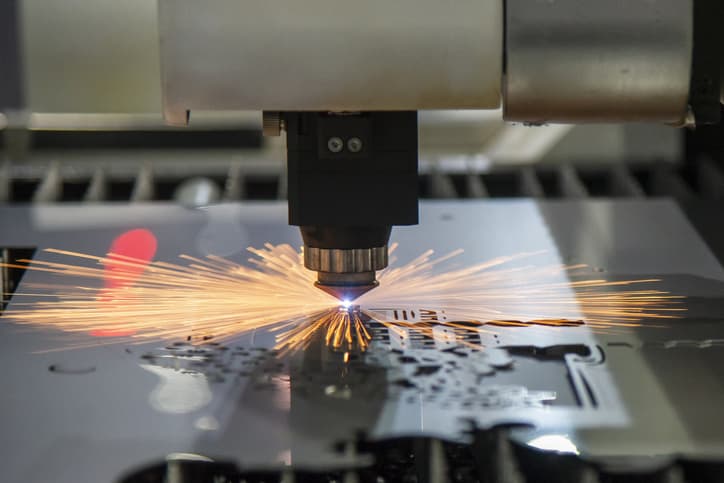
Flame cutting uses oxygen gas to expel the molten material. It causes an exothermic reaction which accounts for an increase in the overall energy input of the process. The process is ideal for cutting mild steel, among other types of sheet metals and fusible materials like ceramics.
Laser Beam Sublimation Cutting
Sublimation cutting uses a laser to evaporate parts of a material with less melting. Like fusion cutting, inert gases – nitrogen, helium, or argon serve as cutting gas, which ensures that the cutting edges are free of oxidants. Though it’s slow, it produces top-quality edges for high-precision cutting.
Advantages of Sheet Metal Laser Cutting
Below are five critical advantages of this manufacturing technique.
High Precision Cuts
The light beam cuts metals with very high precision in laser cutting fabrication. The accuracy and precision at which the laser melts and evaporates materials are incomparable to many other cutting methods. Some die cutting tools have tolerance levels of about 1 to 3 mm, while laser cutters cut at accuracy as low as 0.003mm.
High Sheet Utilization
Laser cutters provide the opportunity to use a large percentage of the fabricating materials. The technology gives little or no room for wastage – the machine maximizes the number of usable parts of any metal sheet. Therefore, less worry about providing excess materials; you can buy the exact amount knowing that it’d be enough.
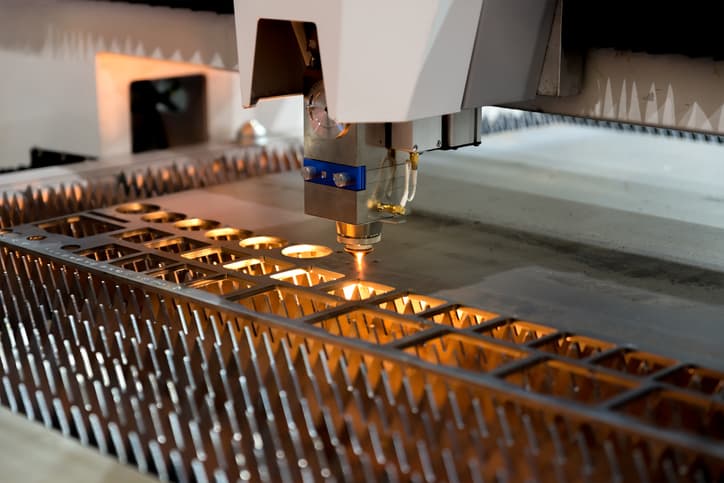
Extreme Cutting Versatility
Laser cutting operations are highly flexible and versatile. A single laser cutter functions well for different cutting operations, such as simple cuts, complex ones with intricate details, markings, drilling even engravings. Therefore, manufacturers do not need to replace tooling from time to time during the process.
Low Power Utilization
Laser cutters do not require moving different parts of the device, unlike some other cutting machines. This allows them to effectively cut out pieces of material without consuming too much energy. While laser cutters can function with 10kW of energy, most other procedures can use up to five times.
Little or No Damage
Perhaps you think the exposure of heat to materials in laser cutting may cause warping or distortion of parts or even total damage. Well, this is untrue. The parts affected by heat in laser cutting are minimal and pose no threat to the tolerance of the features or components after fabrication.
Disadvantages of Sheet Metal Laser Cutting
Despite its numerous benefits, laser cutting sheet metal has a few shortcomings. Let’s discuss them.
Need for Specialist Operator
To best utilize your laser cutters, you might need to employ a professional to operate the machine for part’s fabrication. An expert, for example, will quickly detect a fault or an improper setup that may affect the production processes or even the machine’s integrity.
Limitations on Metal Thickness
Although laser cutting can work well with an extensive array of materials, including metal sheets, it is advised to use other cutting procedures when dealing with thick metals. Typical laser cutters are great for cutting aluminum sheets with a maximum thickness of 15 mm and steel of 6 mm.
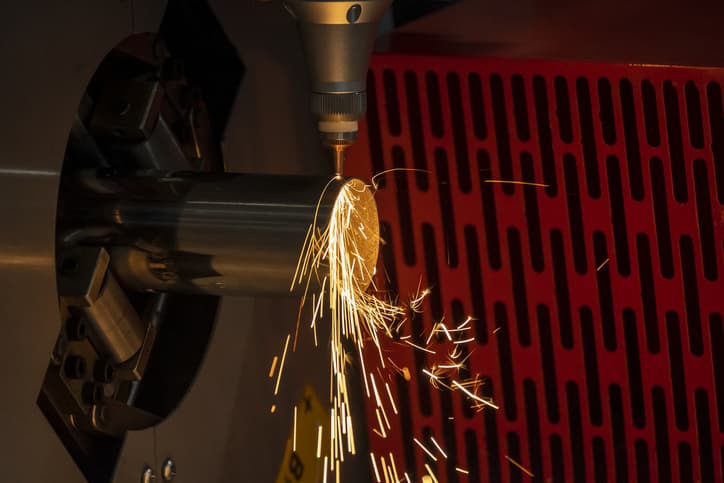
Harmful Gases
As laser cutters melt and evaporate materials, they release harmful fumes significantly when cutting plastic. Consequently, it is vital to operate laser cutting in a well-ventilated room or safe working environment.
High Initial Investment
The cost of a top-quality laser cutter is high. A typical laser cutter may cost about $3000, which is twice as high as the cost of waterjet or plasma cutters. To engage in laser cutting services as a business means, you need to bear the high initial investment.
Design Tips for Laser Cutting Parts
For effective and efficient use of the laser cutting services for your parts. You need to adhere to the below sets of tips for your laser cutting product design.
Your Details Can’t Be Smaller Than Metal Thickness
Thickness is an important factor that you must consider in laser cutting operations. It relates directly to the power of the laser. Therefore, the higher the thickness, the less able the laser can penetrate and cut the material. However, increasing the power of the laser at times might increase the likelihood of cutting such material.
Remember the Kerf
The design of the laser makes it important to note what people call Kerf. Kerf is the material that evaporates when the laser beam hits the laser cutting material. It is not only in laser cutting. It is visible in other subtractive machining processes. Kerf laser cutting occurs due to the thickness of the laser beam. It is an important thing to factor in during the designing stage.
Choose the Right Material
The right material is the most important thing to note before a laser cutting operation. Choosing a material depends on the properties you want the end product to have. For example, materials have different properties in terms of rigidity, translucency, and flexibility. At Rapid Direct, you will have access to different sheet metal laser cutting, plastics, paper, etc.
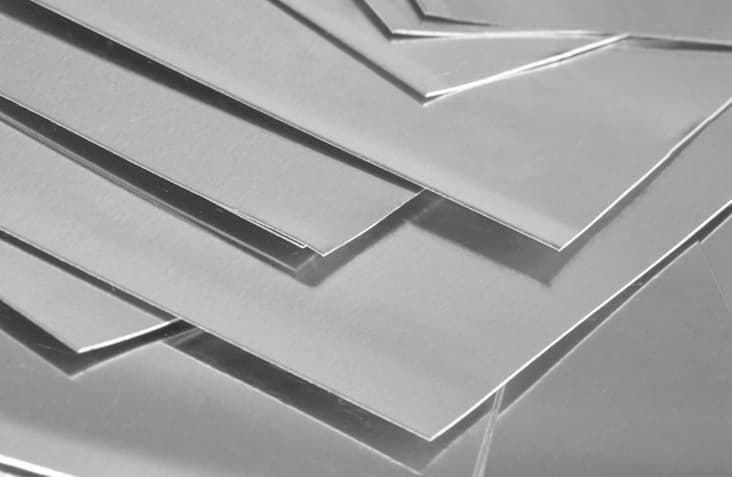
Spacings Are Important
Spacing is very important in laser cutting to remove the error and get the best result possible. The minimum spacing should be equal to the thickness of the material. For example, in sheet metal laser cutting, if sheet metal is 2 mm thick, the spacing between two paths be 2 mm. It is also important if you are looking at working on different laser cut sheet metal designs.
Convert Your Text Into Anchor Points and Curves
Not all laser operations require text cutting. However, if you need to incorporate text, you should space the letters of text and write them in large format. This is for a smoother operation and the best result. If the letters are close, they can overlap, leading to an illegible inscription.
The knowledge of the above tips may assist in reducing sheet metal fabrication costs.
Alternatives to Laser Cutting
Perhaps you do not want to use laser cutting and are unsure of how to cut shapes out of sheet metal; below are other high-end options for your manufacturing needs.
EDM
EDM, Electrical Discharge Machining, like laser cutting, uses thermal energy to remove pieces of material. It uses electrical discharges (sparks) to cut out the desired shape from a material. Compared to laser cutting, EDM produces a better surface finish with a less heat-affected zone. Also, it is suitable for cutting hardened pieces of material.
CNC Milling
CNC milling involves using high-speed rotary cutters to shape materials. Milling operations function well in metals, alloys, and nonmetals. Like laser cutting, they are a high precision subtractive manufacturing process. The main difference between the two processes is that while milling uses cutting tools – rotating cutters, to carve out or shape designs, laser cutting uses beams of lights, laser melt, or burn out design shape.
Waterjet Cutting
Water jet cutting is a manufacturing technique that involves using water or a mixture of water and abrasive substances under high pressure to cut a piece of material.
Below is a comparison between water jet cutting and laser cutting.
- Laser cutters can engrave numbers or marks, whereas water jet cutting allows only cutting.
- Both are suitable for cutting a wide range of materials. However, water jets can’t cut thicker materials than laser cutters, up to 50mm.
- Laser cutting has better tolerance levels and pays more attention to intricate details, which makes them the better choice for complex geometries.
Punching
Punching uses a punch press to cut out the desired shape from a piece of material. Like other CNC operations, punching is a highly precise technique for parts fabrication, and it is also suitable for a vast range of materials. However, punching is not ideal for fabricating components with complex geometries.
Conclusion
Laser cutting is a technology used in rapid prototyping for cutting materials. This article introduced the operation, its history, types, and other things you might know. We believe that you’ve learned one or more things about laser cutting. However, you can trust us at Krrass for the best laser cutting products.
Learn more about our products, please visit and subscribe to our Youtube channel
